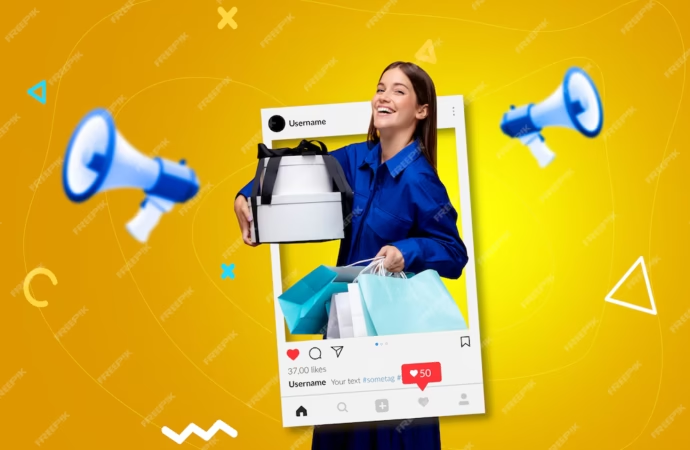Social media campaigns are the booster of your marketing efforts. It is a concentrated burst of energy that significantly boosts your brand reputation, awareness, and sales. So, are you looking for inspiration for your next social media marketing campaign? We’ve gathered a selection of the best over the last year to show you how it’s
Social media campaigns are the booster of your marketing efforts. It is a concentrated burst of energy that significantly boosts your brand reputation, awareness, and sales.
So, are you looking for inspiration for your next social media marketing campaign? We’ve gathered a selection of the best over the last year to show you how it’s done.
Spotify #YearWrapped
In 2017 Spotify launched a campaign where its users could see the important highlights on their website. The special webpage shows your most listened songs, artists, genres and other fun data discoveries. You could even see how the music conceded with your life events.
The reason why this campaign is successful is that Spotify combined two big psychological triggers in this campaign: personalization and FOMO.
Using data-driven insights was another element that contributed to the success of this campaign. By analyzing user data and presenting it in an engaging way, Spotify was able to provide a unique and valuable experience for its users.
Furthermore, by encouraging users to share their highlights on social media and tag their favorite artists, Spotify generated valuable user-generated content that helped promote the platform and its artists. This created a sense of community and engagement around the platform, further contributing to its success.
Dove #RealBeauty
The Dove #RealBeauty social media marketing campaign was a revolutionary marketing campaign that helped Dove redefine its brand and position itself as an advocate for female empowerment. By identifying the interests and feelings of their target audience and using customer insights to develop messaging that spoke directly to them, Dove was able to connect with women on a deeper level.
The campaign’s focus on inner beauty, authenticity, and female empowerment struck a chord with women worldwide. The digital activations accompanying the campaign, such as the “Evolution” video ad, helped spread the message and create a viral sensation.
Dove’s commitment to stop retouching all of their marketing content in 2018, along with other initiatives, such as partnering with Twitter to respond to negative tweets about beauty and body image, flooding Shutterstock with photographs of women tagged “beautiful,” and making 5000 images of underrepresented women free for public use, further strengthened their connection with their customer base and demonstrated their commitment to promoting self-esteem and self-love.
The success of the #RealBeauty campaign is evident in the Prophet Brand Relevance Index®, where Dove is still the most relevant brand in the Household & Personal category, with a strong emotional connection with its customers. Overall, the campaign shows that by listening to their target audience and creating messaging that resonates with them, brands can go beyond promoting their products and advocate for social issues that matter to their customers.
Gillete #TheBestMenCanBe
The Gillette #TheBestMenCanBe campaign was one of the best social media marketing campaigns launched in January 2019 to promote a more positive and modern interpretation of manhood. The campaign featured a short film posted exclusively on YouTube that depicted several cases of men struggling with traditional masculinity, such as the fear of showing their emotions, engaging in sexual harassment, and bullying others.
The campaign was a departure from Gillette’s traditional marketing approach, which had previously focused on promoting traditional masculinity as a sign of strength and virility. Instead, the company took a more progressive approach by highlighting the harmful effects of toxic masculinity and encouraging men to reject these harmful behaviors.
The #TheBestMenCanBe campaign sparked a heated debate on social media, with some applauding Gillette for taking a stand against toxic masculinity. In contrast, others criticised the company for what they perceived as an attack on men.
Despite the controversy, the campaign was widely regarded as a success, with many praising Gillette for taking a bold stance on an important social issue. The campaign helped to redefine Gillette’s brand and position the company as a leader in promoting positive and healthy attitudes toward masculinity.
Apple #ShotOnIphone
The #ShotOniPhone campaign is a great example of how Apple leveraged user-generated content to promote its products and brand. The campaign encouraged iPhone users to post photos they had taken with their phones as part of a contest, with the chance to feature their work on billboards worldwide. The campaign was a huge success, creating massive amounts of user-generated content and creating a buzz around the iPhone as a high-quality camera.
Apple continued to build on the campaign’s success by opening an Instagram account and using the #ShotOniPhone hashtag to promote user-generated content. This helped to keep the momentum going and generate even more exposure for the brand.
One of the key strengths of the campaign was that it didn’t require much effort or investment from Apple, as it was largely an organic exposure campaign that ran itself over time.
By tapping into its large user base and promoting user-generated content, Apple was able to showcase the high-quality camera capabilities of its iPhones and reinforce its brand identity as a company that empowers users through technology. The ongoing success of the #ShotOniPhone campaign demonstrates the power of user-generated content and the importance of leveraging social media to promote a brand.
Starbucks #WhatsYourName
The Starbucks #WhatsYourName campaign worked because it tapped into a socially relevant issue: the rights of transgender and gender-diverse youth. The campaign also aligned with the brand’s values centered on inclusivity and diversity.
Moreover, the campaign utilized a well-known aspect of the Starbucks experience to have your name written on the side of your cup. It created a connection with the customers and made the campaign more relatable.
By partnering with Mermaids and selling a mermaid tail cookie to raise funds for the organization, Starbucks was able to demonstrate its commitment to the cause and show its support to the LGBTQ+ community.
The use of a simple, clear campaign hashtag and motivating social media users to share their experiences with gender also contributed to the success of the campaign. It allowed the brand to amplify its message and engage with its customers.

















Leave a Comment
Your email address will not be published. Required fields are marked with *